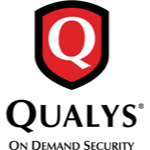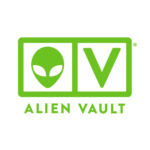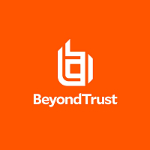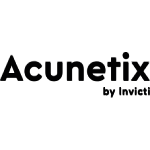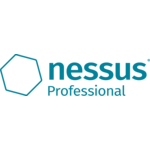List of Best Vulnerability Management Tools
Showing 10 of 52 products
ManageEngine Vulnerability Manager Plus
All-in-One Vulnerability Management Tool
ManageEngine Vulnerability Manager Plus is an end-to-end vulnerability and compliance management tool that instantly detects vulnerabilities, offers built-in remediation, and maintains compliance in real time...Read ManageEngine Vulnerability Manager Plus Reviews
AppTrana is a cybersecurity software that offers robust protection for websites, web applications, and APIs. With its advanced features and unparalleled functionality, AppTrana is dedicated to safeguarding your digital assets from online threats and...Read AppTrana Reviews
Kiuwan Code Security is a solution for identifying and preventing security vulnerabilities in your code. With advanced technology and customizable features, Kiuwan helps protect your applications from potential threats. Enhance your code quality and...Read Kiuwan Code Security Reviews
Qualys Enterprise is an innovative solution that simplifies and strengthens your organizations security posture. With advanced and scalable capabilities, Qualys Enterprise empowers businesses of all sizes to proactively identify and mitigate risks, e...Read Qualys Enterprise Reviews
AlienVault USM, an essential tool for your cybersecurity needs. With its powerful features technology, AlienVault USM offers unparalleled protection against looming cyber threats. It combines the capabilities of different security solutions into one...Read AlienVault USM Reviews
BeyondTrust is a leading software provider that offers advanced solutions for privileged access management and vulnerability management. Their innovative technology combined with expert support and services help organizations around the world prevent...Read BeyondTrust Reviews
Flexera Cloud is a robust software solution designed to revolutionize the way businesses manage their cloud environment. With its powerful features interface, Flexera Cloud simplifies cloud asset management, optimizes costs, and ensures compliance, a...Read Flexera Cloud Reviews
Acunetix is a web vulnerability scanning software that helps businesses and organizations protect their online assets from security threats. With advanced features and automated scanning capabilities, Acunetix ensures the security of websites and web...Read Acunetix Reviews
BMC Software is a leading provider of innovative IT solutions for businesses of all sizes. With a focus on simplifying and streamlining processes, their software offerings empower companies to optimize their IT environments and drive digital transfor...Read BMC Software Reviews
Nessus is a vulnerability scanning tool that empowers organizations to stay one step ahead of cyber threats. With a powerful interface, Nessus provides in-depth security assessments to identify weaknesses and recommend remediation measures, ensuring...Read Nessus Reviews
- What Is Vulnerability Management Tools?
- Top Reasons Why Businesses Need Vulnerability Management Tools?
- What Are the Top Key Features of Vulnerability Management Tools?
- What Are the Top Benefits of Vulnerability Management Tools?
- What Are the Steps to Choose the Right Vulnerability Management Tools?
- What Are the Types of Vulnerability Management Tools for Different Industries?
- What Are the Technology Trends for Best Vulnerability Management Tools?
- What Are the Deployment Options for Vulnerability Management Tools?
What Is Vulnerability Management Tools?
Vulnerability management tools are utilized to detect, analyze, and mitigate software security flaws. The primary function of vulnerability assessments is to detect and pinpoint weaknesses inside a system or network at an early stage, hence mitigating the risk of potential exploitation by malevolent entities. The tools additionally offer comprehensive reports on the system's weaknesses, providing in-depth analytics and insights.
Prior to employing top vulnerability management tools, it is important to conduct an initial scan of the system or network in order to identify and assess potential risks. The scanning process will systematically examine the system for established vulnerabilities and generate a comprehensive report containing a catalog of detected potential security concerns.
One may proceed to systematically examine each vulnerability, do a thorough analysis of the related risks, and thereafter make an informed decision regarding the feasibility and necessity of remediation. After the vulnerabilities have been identified, the process of searching for a solution can commence. Depending on the specific characteristics of the vulnerability, individuals may possess the capability to rectify it independently, or alternatively, they may be required to initiate communication with the vendor in order to solicit a patch or update.
Best vulnerability management tools is imperative to maintain consistent surveillance of the system in order to promptly remedy existing vulnerabilities and prevent the emergence of new ones. In general, the utilization of top vulnerability management tools is a crucial security practice for organizations or systems seeking to safeguard their data. This practice enables individuals to proactively anticipate and mitigate any threats posed by unscrupulous actors, while also ensuring prompt resolution of any identified security vulnerabilities.
Top Reasons Why Businesses Need Vulnerability Management Tools?
1. Early Detection – Top vulnerability management tools facilitate the identification of security vulnerabilities or flaws within organizational networks, enabling firms to proactively discover such issues prior to their exploitation by malevolent entities.
2. Compliance – VMS vulnerability management system play a crucial role in ensuring adherence to industry rules and best practices pertaining to security.
3. Risk Reduction – Vulnerability management solutions facilitate the systematic scanning for potential hazards and subsequent implementation of appropriate measures.
4. Automation – Vulnerability management software possess the capability to conduct proactive scanning of networks and operating systems, hence automating the process of identifying established vulnerabilities.
5. Correlation – VMS vulnerability management system have the capability to establish significant correlations among network activity, hence diminishing the duration required for a threat actor to attain system access.
6. Prioritization – Top vulnerability management tools provide the capability to effectively analyze and rank potential risks, hence assisting enterprises in enhancing their overall security stance.
7. Asset Management – Best vulnerability management software facilitate organizations in obtaining a comprehensive perspective of their assets, hence ensuring their adequate security measures.
8. Real-time Monitoring – Vulnerability management systems enable enterprises to actively monitor their networks, facilitating the timely identification of any potentially malicious activities.
9. Audit Support – Vulnerability management tools provide the capability to furnish further proof during network audits, thereby demonstrating the regular execution of security assessments.
10. Remediation – Best vulnerability management software provide the capability to identify and meticulously document security concerns, hence enabling proactive measures to be taken to address them.
11. Reporting – Vulnerability management systems offer informative reports and dashboards that facilitate educated decision-making for business proprietors.
12. Educating Users – Top vulnerability management tools have the potential to enhance user awareness regarding security and safety best practices.
13. Cost Savings - Vulnerability management systems provide the capability to generate cost savings for enterprises by their capacity to detect and address security concerns in a timely manner, hence preventing their escalation into more severe or financially burdensome incidents.
14. Consolidation – Vulnerability management tools possess the capability to integrate various scanning applications and tools into a unified interface, hence facilitating the efficient organization and presentation of information.
15. Maintenance – Vulnerability management software facilitate the implementation of a systematic maintenance schedule, enabling enterprises to effectively ascertain the currency and security of their networks.
What Are the Top Key Features of Vulnerability Management Tools?
The top key features of vulnerability management tools include: -
- Network scanning: This facilitates the identification and evaluation of vulnerabilities in real-time.
- Assessment: Conducts a comprehensive examination of the system in order to identify any potential vulnerabilities.
- Auditing: The system offers comprehensive audit trail monitoring and compliance verification, encompassing access controls and tracking of user activities.
- Vulnerability reporting: This system offers prompt alerting and reporting of identified vulnerabilities.
- Remediation: This system facilitates the automated process of fixing detected vulnerabilities and assists users in establishing preventive measures.
- Threat intelligence integration: This platform offers users the ability to obtain information regarding the most recent hazards that have the potential to impact the system.
- Data analysis: Leverages big data analytics to aggregate data and generate analyses that offer practical and implementable insights.
- Vulnerability scoring: The process of assigning numerical numbers to faults in order to quantify the level of danger associated with each individual issue.
- Asset tracking and management: The system tracks and monitors the assets present in an organization's network, offering a comprehensive platform for the purposes of asset discovery and security management.
- Automation: This system automates several security processes, including patching and reporting, with the aim of alleviating the workload on IT personnel.
What Are the Top Benefits of Vulnerability Management Tools?
The top benefits of vulnerability management tools include:
1. Improved Security Posture: Vulnerability tracking software have the capacity to assist companies in maintaining a heightened level of security by proactively identifying and mitigating potential risks prior to their exploitation.
2. Compliance Assistance: Best vulnerability management software possess the capability to promptly and effortlessly detect security concerns that necessitate resolution to meet regulatory compliance obligations.
3. Automation: Through the implementation of automated vulnerability scanning, companies can optimize resource allocation and achieve cost and time efficiencies.
4. Improved Problem Identification and Resolution: Vulnerability management systems offer comprehensive insights into the characteristics and origins of security concerns, facilitating expedited and accurate identification of the underlying issue and enabling prompt and effective resolution.
5. Increased Visibility: Vulnerability management software facilitate enhanced visibility of an organization's security environment, empowering proactive management of security programs.
6. Automated Remediation: Best vulnerability management software have the capability to facilitate the automation of remediation procedures within businesses, hence diminishing the need for manual intervention and expediting the overall process.
7. Improved Network Monitoring: Vulnerability management systems facilitate the continuous monitoring of organizational networks, enabling timely detection and alerting of potential threats.
8. Customization: Organizations have the opportunity to adapt vulnerability management systems in order to align with their unique requirements, hence enabling them to customize the solution to their specific security needs.
What Are the Steps to Choose the Right Vulnerability Management Tools?
1. Identify your needs: Prior to selecting a vulnerability management solution, it is imperative to distinctly ascertain the objectives of the organization, its specific security prerequisites, and the aims of the vulnerability management program.
2. Analyze various tools: After the identification of needs, it is imperative to do research in order to identify a range of tools that align with the specific requirements of the organization.
3. Compare features and scalability: This analysis aims to compare the characteristics of vulnerability tracking software and evaluate their potential for deployment inside an organization. It is vital to ensure that the tool possesses the capability to scale effectively in accordance with the expanding requirements of the firm.
4. Assess the cost: This study aims to conduct a comprehensive analysis of the financial implications of utilizing different technologies, taking into account not only the initial cost of acquisition but also the additional expenses associated with implementation and ongoing maintenance.
5. Review user feedback and reports: Prior to selecting a tool, it is advisable to assess the feedback provided by current users in order to gain a comprehensive comprehension of the advantages and disadvantages associated with those products.
Furthermore, it is important to study studies produced by impartial third-party organizations regarding the security status of certain products.
6. Evaluate support: The assessment of the vendor's customer support should be given due consideration, as it is vital for an organization to have access to technical assistance during the deployment of the product.
7. Final selection: The comprehensive evaluation of the appropriate vulnerability management solution should encompass an assessment of the immediate and enduring requirements of the company.
What Are the Types of Vulnerability Management Tools for Different Industries?
Vulnerability management tools encompass software solutions that are specifically developed to detect, evaluate, and provide comprehensive documentation on system vulnerabilities and security shortcomings. The availability of vulnerability tracking software in various industries is contingent upon the specific security needs of the company, alongside the regulatory and compliance norms that are in effect.
Various sectors commonly utilize a range of best vulnerability management tools, which can be classified as follows:
1. Vulnerability scanners: Automated tools are employed for the purpose of scanning systems and networks in order to detect potential vulnerabilities. The practice of conducting simulated attacks serves the purpose of identifying security vulnerabilities and emphasizing areas of weakness.
2. Configuration management systems: These technologies facilitate the management of an organization's configurations by autonomously identifying any modifications made to the system.
3. Identifying potential security: Penetration testing tools are utilized to conduct assessments on networks and systems with the objective of identifying potential security gaps and vulnerabilities.
4. Security information and event management (SIEM): These systems offer a complete perspective on security threats across several systems through the analysis of logs derived from diverse sources.
5. Software vulnerability scanners: These tools are capable of detecting deficiencies in software code through the process of scanning and analyzing the source code of an application, with the aim of identifying vulnerabilities and other potential dangers.
6. Security vulnerability assessment tools: These tools are designed to conduct scans on systems and networks in order to identify vulnerabilities and potential security problems.
7. Vulnerability identification tools: These tools enable enterprises to rapidly and effectively discover and ascertain system vulnerabilities.
What Are the Technology Trends for Best Vulnerability Management Tools?
The technology trends for best vulnerability management tools are as follows:
1. Automation: The utilization of automation is increasingly prevalent as a strategy to enhance the efficiency of the vulnerability management process. Automation enables enhanced efficiency in the detection and mitigation of vulnerabilities, as well as the continuous monitoring of the system.
2. Cloud-Based Solutions: Cloud-based solutions enable enterprises to conveniently obtain the most up-to-date vulnerability updates and fixes. This enables enterprises to remain current and responsive in the face of evolving security risks.
3. Multi-Tiered System Architecture: Numerous contemporary vulnerability tracking software include a multi-tiered framework. This enables firms to promptly and effectively identify, prioritize, and address issues.
4. Artificial Intelligence (AI): Artificial intelligence (AI) is currently being employed within vulnerability management solutions with the aim of expediting the identification and mitigation of vulnerabilities. Artificial intelligence possesses the capability to examine complex systems and autonomously provide viable remedies for the flaws it detects.
5. Risk-Based Approach: The utilization of risk-based methodologies is gaining traction in the realm of vulnerability management.
By employing vulnerability tracking software methodology, businesses may effectively allocate resources to assess and mitigate risks, so enhancing their ability to safeguard their environment and manage vulnerabilities.
What Are the Deployment Options for Vulnerability Management Tools?
The selection of deployment options for vulnerability management solutions is contingent upon the specific type of technology employed. In a broad sense, vulnerability management technologies have the capability to be implemented in either on-premise or cloud-based settings.
On-premise deployment, also known as "local" or "legacy" deployment, necessitates the installation and operation of the vulnerability management solution on a server or workstation located within the company's physical premises. This deployment option entails the storage and maintenance of all essential data within the organization, hence affording a heightened degree of control and privacy over the data.
Cloud-based deployment necessitates the hosting and operation of the vulnerability tracking software on servers belonging to a third-party cloud provider. The utilization of cloud-based deployment presents several benefits in comparison to on-premise deployment, including cost-effectiveness, scalability, and enhanced accessibility.
Moreover, the potential for cost reduction linked to the implementation of cloud-based deployment can be further enhanced by exclusively procuring or leasing the essential resources required for operational purposes. The selection of a deployment option for a best vulnerability management tools is contingent upon the specific requirements of the business or organization implementing the solution.


